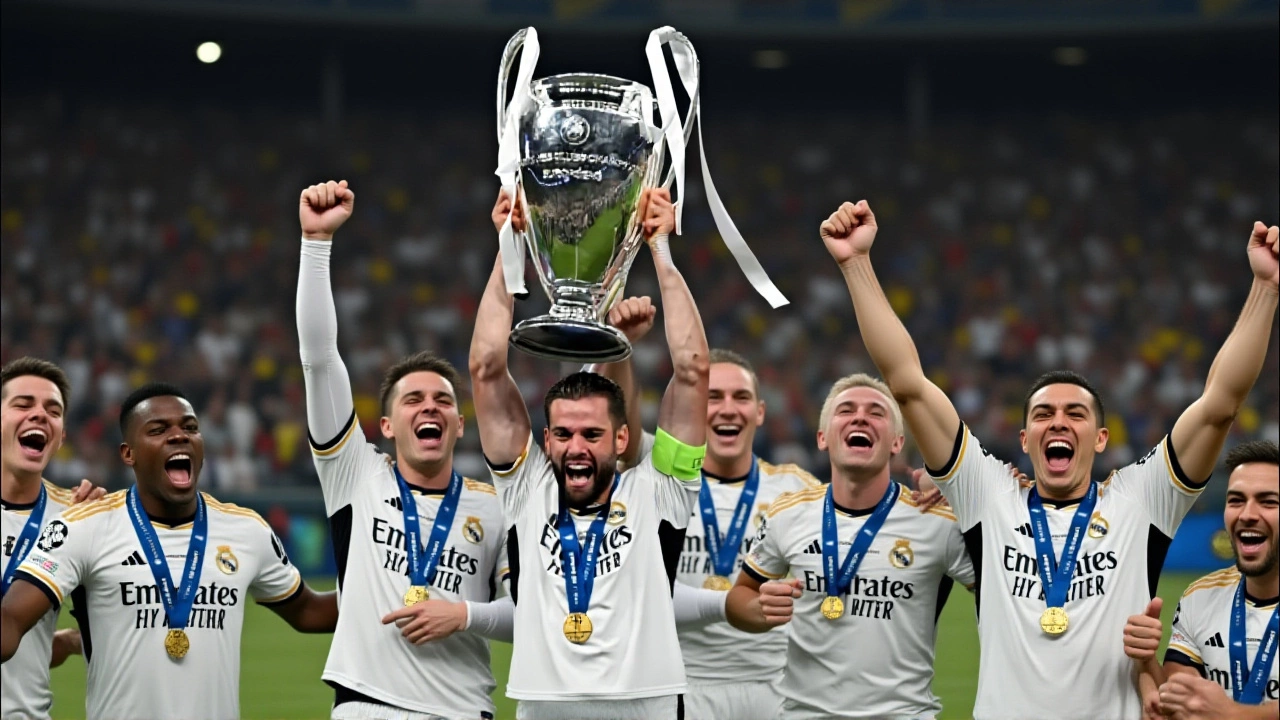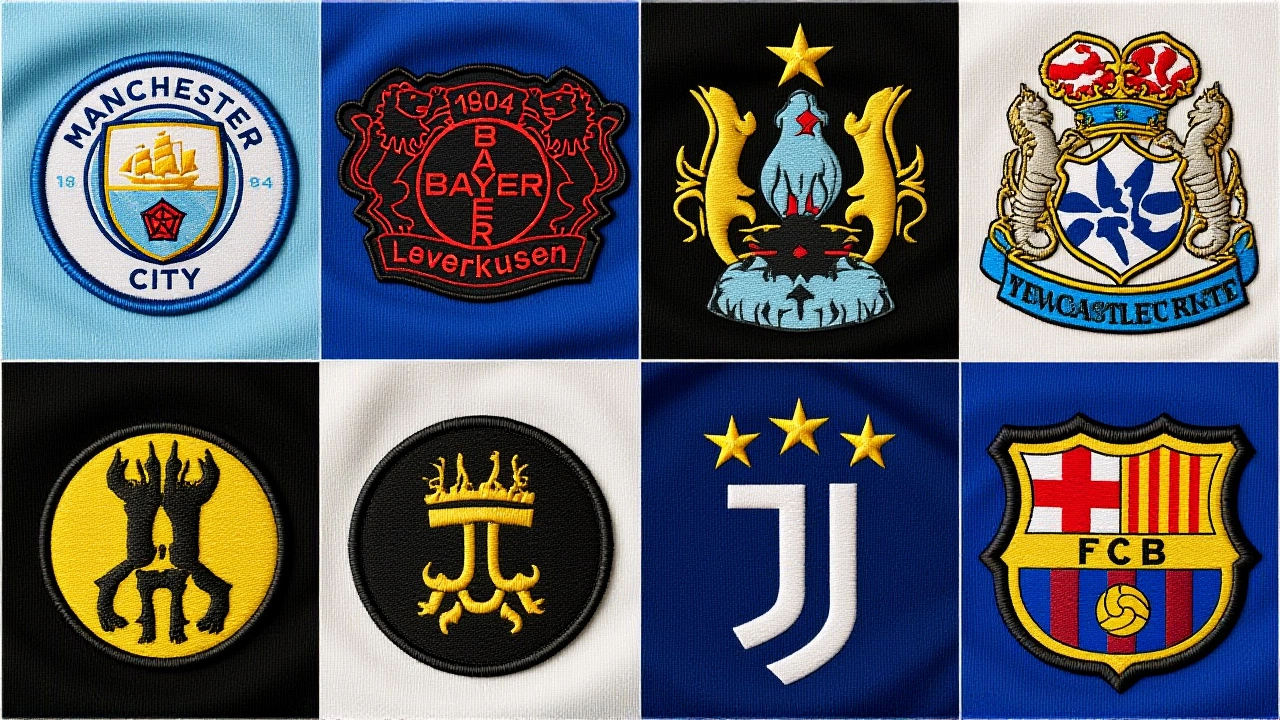Champions League 2025/26: New 36-Team Format Sparks Chaos and Excitement

The 2025-26 UEFA Champions League didn’t just start—it exploded onto the scene with a format no one saw coming. On July 8, 2025, 36 clubs from across Europe kicked off the most radical overhaul in the tournament’s 71-year history. No more cozy groups of four. No more predictable fixtures. Just one giant, swirling league table where every match matters—and losing could mean the end of your European dream. The final? Budapest’s Puskas Arena on May 30, 2026. And this time, there’s no safety net.
Why This Format Is a Game-Changer
For decades, the Champions League ran on a simple rhythm: eight groups, six games, top two advance. Simple. Familiar. Safe. But UEFA, hungry for more drama and more revenue, tore it all up. Now, every team plays eight matches—four home, four away—against randomly drawn opponents. No more easy groups. No more guaranteed matchups with rivals. A club could face Bayern Munich on Matchday 2, then Manchester City on Matchday 7. The draw? Computerized. The stakes? Higher than ever.
The old system gave teams a cushion. Lose one game? You could bounce back. Now? Every point is currency. Win? You get three. Draw? One. Lose? Nothing. And if you finish 25th or worse? You’re out. No Europa League lifeline. Not even a consolation prize. Just silence.
The Teams: Who Made the Cut?
Twenty-nine teams qualified automatically. Paris Saint-Germain, the defending champions, walked in as titleholders. Tottenham Hotspur, Europa League winners, got the automatic berth reserved for that crown. The rest? Earned through domestic league finishes—or fought tooth and nail in qualifying.
Seven spots were decided in brutal, two-legged ties. Think FCI Levadia vs. RFS (0-2), or Lincoln Red Imps sneaking past Víkingur Gøta (2-4). These aren’t just matches—they’re survival stories.
England’s six representatives? That’s a record. Liverpool, Arsenal, Manchester City, Chelsea, Tottenham Hotspur, and Newcastle United. Six English clubs in one league phase. No other country comes close. The Premier League’s dominance isn’t just financial—it’s structural now.
The Calendar: A Marathon, Not a Sprint
UEFA didn’t just change the format—they stretched the calendar. Eight matchdays now, spread across ten midweek windows. The Champions League uses eight of them. The Europa League gets one week to itself (September 24-25). The Conference League? December 18. That’s a lot of football. And it’s intentional.
Matches like November 26, 2025—Arsenal vs. Bayern Munich, Atlético Madrid vs. Inter Milan—are no longer rare treats. They’re now routine. January 28, 2026? Liverpool vs. PSV Eindhoven. Manchester City vs. Galatasaray. The fixtures are packed, unpredictable, and relentless.
And the total number of games? 189. Up from 125. That’s 64 extra matches. More TV slots. More ads. More money. UEFA’s CFO didn’t just approve this—they celebrated it.
Who Advances? The New Rules
Here’s where it gets brutal:
- Positions 1-8: Direct entry to the round of 16. No play-offs. No stress.
- Positions 9-24: Knockout play-offs in February 2026. Two-legged ties. Higher-ranked teams get home advantage in the second leg. This is where titles are lost—and won.
- Positions 25-36: Eliminated. Full stop. No Europa League. No consolation. Just a flight home.
The knockout draw for the play-offs? January 30, 2026. The ties? February 17-18 and February 24-25. Then, the round of 16 draw on February 27. The actual matches? March 10-11 and March 17-18. Quarter-finals in April. Semi-finals in late April and early May. Final on May 30.
And here’s the twist: league phase rankings now seed every round. Not just the play-offs. Not just the round of 16. The quarter-finals and semi-finals too. That means a team finishing 15th could, in theory, face the 1st-place team in the quarter-finals. No protection. No mercy.

The Human Cost
Players are exhausted. Coaches are furious. Some managers say it’s “football on steroids.” Others call it “a corporate experiment.”
“We used to have three weeks to recover after a tough group stage,” said one Premier League head coach, speaking off-record. “Now? We play every 10 days. We’re talking about 17 games for the finalists. That’s 17 games in 10 months. It’s not sustainable.”
And yet, fans are hooked. The randomness? Thrilling. The stakes? Unmatched. A mid-table team from Portugal can knock out a Spanish giant. A Turkish side can end a German dynasty. The old format was predictable. This? This is chaos with a purpose.
What’s Next?
The 2026-27 Champions League will be even bigger. The winner of this season gets automatic entry—even if they don’t finish in the top four of their league. And they’ll face the Europa League winner in the 2026 UEFA Super Cup in August.
UEFA’s next move? Likely expanding to 40 teams by 2028. More money. More matches. More global reach. The question isn’t whether this format will last—it’s whether the players, clubs, and fans can keep up.
Frequently Asked Questions
How does the new 36-team league phase affect smaller clubs?
Smaller clubs now have a chance to earn more revenue from eight guaranteed matches instead of six. But the risk is higher: finishing 25th means no Europa League money, no exposure, and no financial lifeline. Clubs like FCI Levadia or Lincoln Red Imps might make the group stage, but if they lose five of their eight games, they’re out with nothing. It’s a high-reward, high-risk gamble.
Why was the Europa League drop-out removed?
UEFA wanted to increase the prestige of the Champions League by eliminating the safety net. Previously, teams finishing third in their group dropped into the Europa League—diluting the competition’s exclusivity. Now, only the top 24 survive. That makes every match in the league phase feel like a knockout. It’s designed to keep fans glued to every game, even in the middle of the table.
What impact does this have on English clubs?
England’s six clubs face a brutal gauntlet. With more matches, the physical toll is immense. But the financial upside is huge: each of the six can earn up to €100 million if they reach the final. The new format rewards consistency over luck. Teams like Manchester City and Liverpool have the depth to handle it. Smaller clubs like Newcastle United may struggle with squad rotation and injuries over the long haul.
Who benefits the most from this format?
UEFA and broadcasters win. More matches mean more advertising, more global viewership, and more licensing deals. Top clubs like Paris Saint-Germain and Manchester City benefit from guaranteed high-value fixtures. Even mid-tier clubs earn more from TV rights and sponsorship tied to league phase performance. The real losers? Players, whose workload has increased by 30% without proportional pay increases.
What happens if a team wins the Champions League but doesn’t qualify domestically?
They still get an automatic spot in the 2026-27 Champions League league phase. This rule protects the tournament’s integrity—if a team wins Europe but finishes sixth in their league, they don’t get left out. It’s a rare exception that rewards success over domestic performance. Last season, this rule didn’t apply because the winner, PSG, finished first in Ligue 1. But if a team like Napoli won the trophy and finished fifth in Serie A, they’d still qualify.
How does the draw work, and why is it so unpredictable?
The draw uses a computer algorithm that ensures no team plays the same opponent twice and maintains geographical balance where possible. But it doesn’t care about rivalries, history, or fan interest. A team from the Netherlands might face a Spanish giant on Matchday 1, then a Ukrainian side on Matchday 5. That unpredictability is intentional—it makes the league phase feel like a lottery, which keeps fans guessing and media talking.

